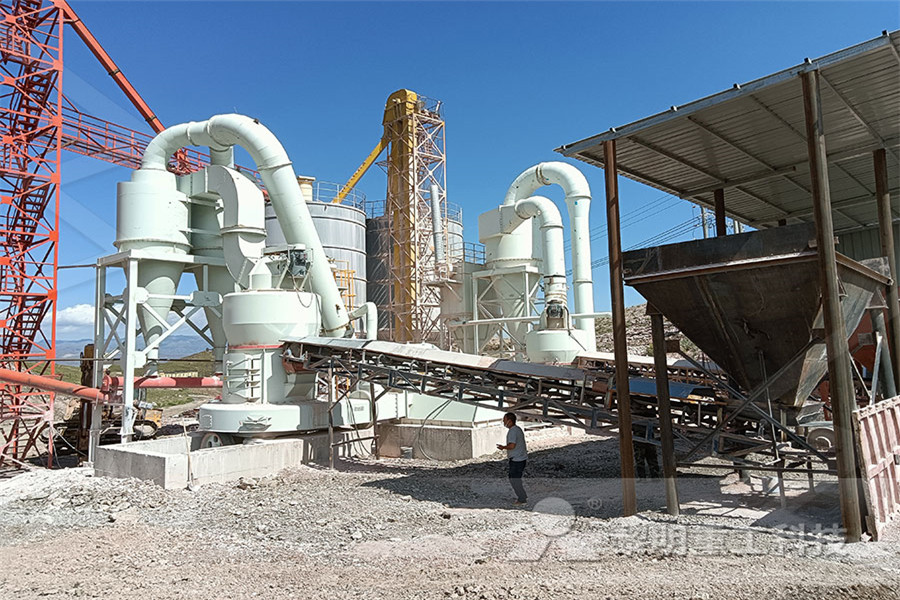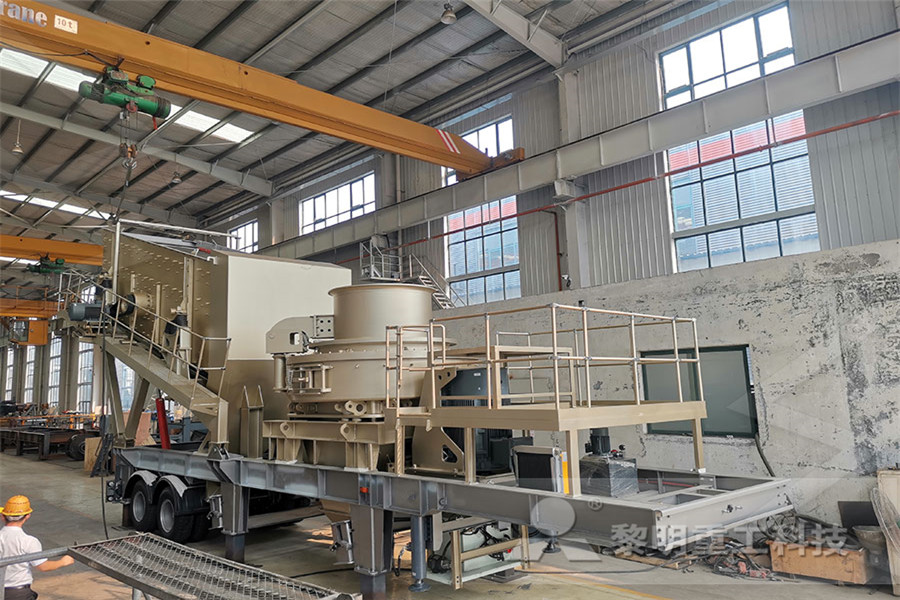
Belt Conveyor Drives Factors Selection 911
Conventional belt conveyors are powered by electric or electromechanical drives mounted at the conveyor’s head, tail, intermediate return span, or a combination of these The following are main elements influencing the selection of the drive system: MOTOR SELECTION for BELTCONVEYOR DRIVES Abstract—Rated power is the motor parameter always specified when motors are selected for a belt conveyor—motor slip is usually ignored This paper shows how the running and starting characteristics of a belt conveyor are influenced by slipMOTOR SELECTION for BELTCONVEYOR DRIVES The ideal location for the drive of a belt conveyor is the place which minimizes belt tensions both during the acceleration and running periods Although circumstances may dictate that a drive be located somewhere between the ends of a conveyor, locating it at the head end when the conveyor has to be powered to drive Conveyor Belt Drive Selection 911 MetallurgistMOTOR SELECTION for BELTCONVEYOR DRIVES Abstract—Rated power is the motor parameter always specified when motors are selected for a belt conveyor—motor slip is usually ignored This paper shows how the running and starting characteristics of a belt conveyor are influenced by slip It shows that highslip motors improve load sharing between [PDF] MOTOR SELECTION for BELTCONVEYOR Wedge Belt Selection Example Design a Wedge belt drive from a 90kW, 1440 rev/min direct on line start electric motor to a Belt Conveyor which carries copper ore and absorbs 81 kW The conveyor must run at 403 rev/min for 12 hours per day The required centre distance is 1200 mmBelts Drives Wedge belt selection procedure

Belt Conveyor Backstops: Size Selection for Conveyor
Belt Conveyor Backstops: Size Selection for Conveyor Drive Applications January 12, 2015 Backstops Holdbacks Mining Aggregate The continuing world demand for energy resources and raw materials from the earth creates a requirement for a rapid means of With belt width and speed fixed, select conveyor components and calculate belt tension required to overcome gravity, friction, and momentum using: Te = LKt (Kx + KyWb + 0015Wb) + Wm(LKy + H) + Tp + Tam + Tac Calculate power required to drive belt Selecting the Optimal Conveyor Drive Automation Selection (Primary Backstop): 4 X 1500 HP X 5250 X 130 SF/ 40 RPM = 1,023,750 FTLBS Correction torque = 1,023,750/ 17 = 602,206 FTLBS Backstop size = BS465F X 2 (Bore range: 1378 to 1831”) Torque capacity of BS465F = 722,000 FTLBS > 602,206 FTLBS Selection (Secondary Backstop): 2 X 1500 HP X 5250 X 130 SF/ 40 RPM = 511,875 FTLBSBackstop Size Selection for Conveyor Drive Applications This is the description of such a drive concept covering five belt conveyors implemented recently by ABB For the first time ABB Automation has used here grid converters according to the latest developments of drive technology Fig 2: Beltconveyor scheme 1 2 3 U Drive U U Drive D r i v e U 44 U U U U U Drive U 1552 m 1482 mDrive U 906 m 910 m 6 7 2 m (152 m) 2 2 5 m 3 8 1 mVariablespeed drives for beltconveyor systems Selecting the Optimal Conveyor Drive This paper suggests several mechanical, electrical, and software ideas that will enable conveyor designers to optimize conveyor reliability and "maintainability" without the need for large investments in equipment and design time It introduces the concept of internally powered conveyor belt drives and offers generally applicable belt drive design softwareSelecting the Optimal Conveyor Drive Automation

Backstop Size Selection for Conveyor Drive Applications
Tandem Drives When the conveyor arrangement calls for a primary and secondary drive, as shown in Figure 3, the Backstop on the primary drive unit holds the full load The Backstop on the secondary drive unit holds the back tension from the belt It keeps belt traction on both conveyor This paper gives a review of the belt conveyor technology that focuses on the types of drives and the control system or the controller of the belt conveyor This paper highlights the characteristics, performance measure, requirements and the(PDF) Belt Conveyor Drives and Control Systems Aini Slat Belt Conveyor Slat conveyors are a type of conveying technology that uses a chaindriven loop of slats to move product from one of its ends to another A motor drives the chain, which causes it to cycle just as belt conveyors do Instead of a rubber belt, this conveyor type uses slats connected to a chain, providing a rigid, flat surface for every item on the conveyorConveyor Systems Types, Specifications and Selection Types of Belt Conveyor Drives: Single Unsnubbed Bare / Lagged pulley Drive Snubbed Bare / Lagged Pulley Drive Tandem Drive Special Drives Single Unsnubbed Bare / Lagged Pulley Drive: This is the simplest drive arrangement consisting of a steel pulley connected to a motor and the belt wrapped round it on an arc of 180°Types Of Belt Conveyor Drives Belt Conveyor Drive Drives known as lower belt drives, or centre drives, can be installed in various locations below the transport level The primary application for these drives is reverse operation (reversible conveying direction), since the transport medium is always pulled, preventing the problems that arise when the belt is pushedDrives for conveyor systems mk Technology Group

Selection of a Flatwire Conveyor Belt System Bright
Sprocket drives can be used in this belt drive system that provides troublefree operation for the industries It has very smooth and flat surface that is very important for the stability of the product during transmission Disadvantages of Flatwire Conveyor Belt Drives The installation of this belt drive is very high It takes large space to Variablespeed drives for belt conveyor systems, Nov 2000 2 ABB Process Industries Open Pit Mining Materials Handling, Cottbus/Germany Introduction More and more frequently, modern beltconveyor systems are equipped with variablespeed drives on the basis of frequency converters connected with standard squirrelcage motors and gearboxesVariablespeed drives for beltconveyor systems Belt Widths The belt widths are as follows: 18, 24, 30, 36, 42, 48, 54, 60, 72, 84, and 96 inches The width of the narrower belts may be governed by the size of lumps to be handled Belts must be wide enough so that any combination of prevailing lumps and finer material does not load the lumps too close to the edge of the conveyor beltBelt Conveyors for Bulk Materials Calculations by CEMA 5 The rotation motion is the ideal and the simplest means of transmission of mechanical power with negligible losses Rotational motion can be transmitted from one mechanical element to the other with the help of certain systems known as transmission systems or drives These systems are driven by a prime mover or transmit the rotational motion to the various parts of a machine within itselfBelt Drives: Types, Slip/Creep Motor selection: Optimizing belt drives Conveyor systems with CAN network are becoming ever more popular The reason is the flexibility and simple controllability of several drives, which the network system provides It is expected that the systems can be flexibly adapted to a certain extent, whether in terms of speed or the loads that are Motor selection: l Optimizing belt drives

(PDF) Belt Conveyor Drives and Control Systems Aini
This paper gives a review of the belt conveyor technology that focuses on the types of drives and the control system or the controller of the belt conveyor This paper highlights the characteristics, performance measure, requirements and the Types of Belt Conveyor Drives: Single Unsnubbed Bare / Lagged pulley Drive Snubbed Bare / Lagged Pulley Drive Tandem Drive Special Drives Single Unsnubbed Bare / Lagged Pulley Drive: This is the simplest drive arrangement consisting of a steel pulley connected to a motor and the belt wrapped round it on an arc of 180°Types Of Belt Conveyor Drives Belt Conveyor Drive Design criteria for energy efficient belt conveyor drives The final result is a Selection Diagram which enables fast concept decisions for efficient conveyor drives Published in: 2014 International Symposium on Power Electronics, Electrical Drives, Automation and MotionDesign criteria for energy efficient belt conveyor Slat Belt Conveyor Slat conveyors are a type of conveying technology that uses a chaindriven loop of slats to move product from one of its ends to another A motor drives the chain, which causes it to cycle just as belt conveyors do Instead of a rubber belt, this conveyor type uses slats connected to a chain, providing a rigid, flat surface for every item on the conveyorConveyor Systems Types, Specifications and Selection BELT CONVEYOR DRIVES A CONSIDERATION OF SOME DESIGN ASPECTS JH Rall PrEng, BSc Eng, MSAIME Hansen Transmissions (Pty) ltd P Staples PrEng BSc, MSAIME Managing Director Conveyor Knowledge and Information BELT CONVEYOR DRIVES A CONSIDERATION OF

Conveyor belt drives Hseries Applications Flender
The Hconveyor gear units are compact, have a high power density and are available in 25 construction sizes They are well suited for multiple drives to meet very high power requirements These belt drives have proved themselves in thousands of applications worldwide Your benefits at a glance Large selection of 25 sizes with few component In these types of belt drive, the belt is employing when the two parallel shafts have to rotate in the same direction; When the shafts are far apart, the lower side of the belt should be the tight side and the upper side must be the slack side This is because, when the upper side becomes the slack side, it will sag due to its own weight and thus increase the arc of contactBelt Drives: Types, Slip/Creep Variablespeed drives for belt conveyor systems, Nov 2000 2 ABB Process Industries Open Pit Mining Materials Handling, Cottbus/Germany Introduction More and more frequently, modern beltconveyor systems are equipped with variablespeed drives on the basis of frequency converters connected with standard squirrelcage motors and gearboxesVariablespeed drives for beltconveyor systems Roller Drive Chain Selection Technical Information 29 Required information for drive selection: small waste conveyor beltU small waste conveyor chainM sorting table M triple hoist drives and conv M transfer rolls or conveyorM trimmer feed M waste conveyor M Machine Tools bearing roll M punch press gear drives H notching press belt drivesH Roller Drive Chain Selection and Engineering Information